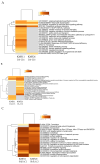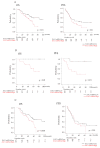Role of Rac1 in p53-Related Proliferation and Drug Sensitivity in Multiple Myeloma
- PMID: 39941828
- PMCID: PMC11815915
- DOI: 10.3390/cancers17030461
Role of Rac1 in p53-Related Proliferation and Drug Sensitivity in Multiple Myeloma
Abstract
In this work, the study presented in [...].
Keywords: Ras-related C3 botulinus toxin substrate 1 (Rac1); Rho-GTPase signaling; chemosensitivity; multiple myeloma; p53.
Conflict of interest statement
Hiroshi Handa has received honoraria from Takeda Pharmaceutical, Janssen Pharmaceutical, and Bristol–Myers Squibb. Hiroshi Handa has received research grants from Janssen Pharmaceutical, Pfizer, Amgen, GlaxoSmithKline, Sanofi, and Abbvie. Yoshiyuki Ogawa has received honoraria from Chugai Pharmaceutical. For the remaining authors, no relevant conflicts of interest were declared. The funders had no role in the design of the study; collection, analyses, or interpretation of data; writing of the manuscript; or the decision to publish the results.
Figures













References
-
- Matsumura I., Oda T., Kasamatsu T., Murakami Y., Ishihara R., Ohmori A., Gotoh N., Matsumoto A., Kobayashi N., Miyazawa Y., et al. Role of Ras-Related C3 Botulinus Toxin Substrate 1 in p53-Related Proliferation and Drug Sensitivity in Multiple Myeloma; Proceedings of the 66th American Society of Hematology Annual Meeting and Exposition; San Diego, CA, USA. 8 December 2024.
Grants and funding
LinkOut - more resources
Full Text Sources
Research Materials
Miscellaneous

